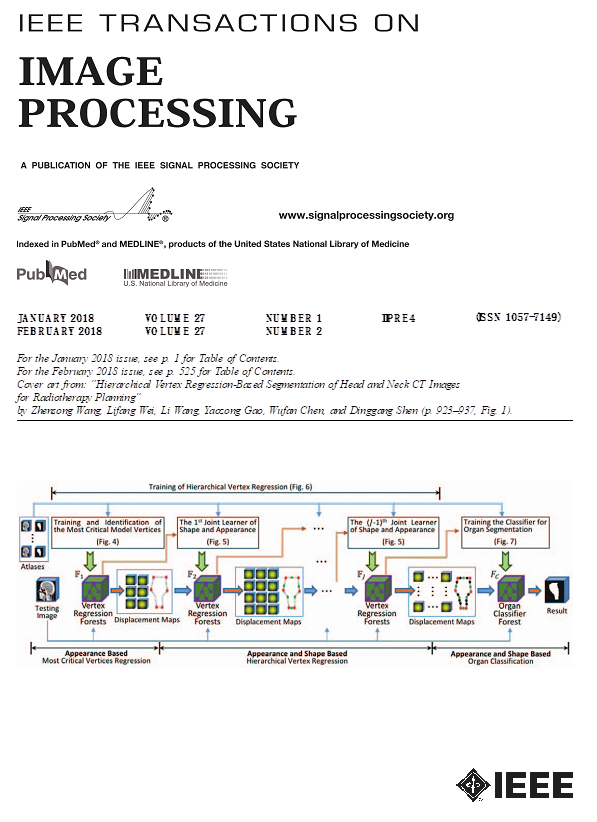Exploring Multimodal Knowledge for Image Compression via Large Foundation Models.
IF 13.7
1区 计算机科学
Q1 COMPUTER SCIENCE, ARTIFICIAL INTELLIGENCE
引用次数: 0
Abstract
Knowledge is an abstraction of factual principles of the physical world. Large foundation models encapsulate extensive multimodal knowledge into the parameters and thus invoke machine intelligence on various tasks. How to invoke the knowledge in these models to facilitate image compression lacks in-depth exploration. In this work, we aim to harness multi-modal knowledge into ultra-low bitrate compression and propose Multimodal Knowledge-aware Image Compression (MKIC). Our key insight is that under the context of ultra-low bitrate compression, where the encoded representation is too sparse to represent enough information of the input signal, knowledge from the physical world is required to be incorporated into the compression. Thus, more shared patterns can be stored in the model together with sparse unique features also embedded into the bitstream. In light of two kinds of knowledge, namely natural visual knowledge and human language knowledge, we propose a novel Alternating Rate-Distortion Optimization to enhance the accuracy and compactness of global semantic text representation extraction, extract the local feature map that captures visual details, and integrate these multimodal representations into a large generative foundation model to achieve high-quality reconstruction. The proposed method relights the path of learned image coding, leveraging decoupled knowledge from large foundation models. Extensive experiments show that our proposed method achieves superior comprehensive performance compared to various methods and shows great potential for ultra-low bitrate image compression.通过大型基础模型探索图像压缩的多模态知识。
知识是对物质世界的事实原则的抽象。大型基础模型将广泛的多模态知识封装到参数中,从而在各种任务上调用机器智能。如何调用这些模型中的知识来进行图像压缩,还缺乏深入的探索。在这项工作中,我们的目标是利用多模态知识进行超低比特率压缩,并提出了多模态知识感知图像压缩(MKIC)。我们的关键见解是,在超低比特率压缩的背景下,编码表示过于稀疏,无法表示输入信号的足够信息,需要将来自物理世界的知识纳入压缩中。因此,可以在模型中存储更多的共享模式,并将稀疏的唯一特征嵌入到比特流中。针对自然视觉知识和人类语言知识两种知识,提出了一种新的交替率失真优化方法,以提高全局语义文本表示提取的准确性和紧凑性,提取捕获视觉细节的局部特征图,并将这些多模态表示集成到一个大的生成基础模型中,实现高质量的重建。该方法利用大型基础模型的解耦知识,重新照亮了学习图像编码的路径。大量的实验表明,与各种方法相比,我们提出的方法具有优越的综合性能,在超低比特率图像压缩方面具有很大的潜力。
本文章由计算机程序翻译,如有差异,请以英文原文为准。
求助全文
约1分钟内获得全文
求助全文
来源期刊

IEEE Transactions on Image Processing
工程技术-工程:电子与电气
CiteScore
20.90
自引率
6.60%
发文量
774
审稿时长
7.6 months
期刊介绍:
The IEEE Transactions on Image Processing delves into groundbreaking theories, algorithms, and structures concerning the generation, acquisition, manipulation, transmission, scrutiny, and presentation of images, video, and multidimensional signals across diverse applications. Topics span mathematical, statistical, and perceptual aspects, encompassing modeling, representation, formation, coding, filtering, enhancement, restoration, rendering, halftoning, search, and analysis of images, video, and multidimensional signals. Pertinent applications range from image and video communications to electronic imaging, biomedical imaging, image and video systems, and remote sensing.
 求助内容:
求助内容: 应助结果提醒方式:
应助结果提醒方式:


